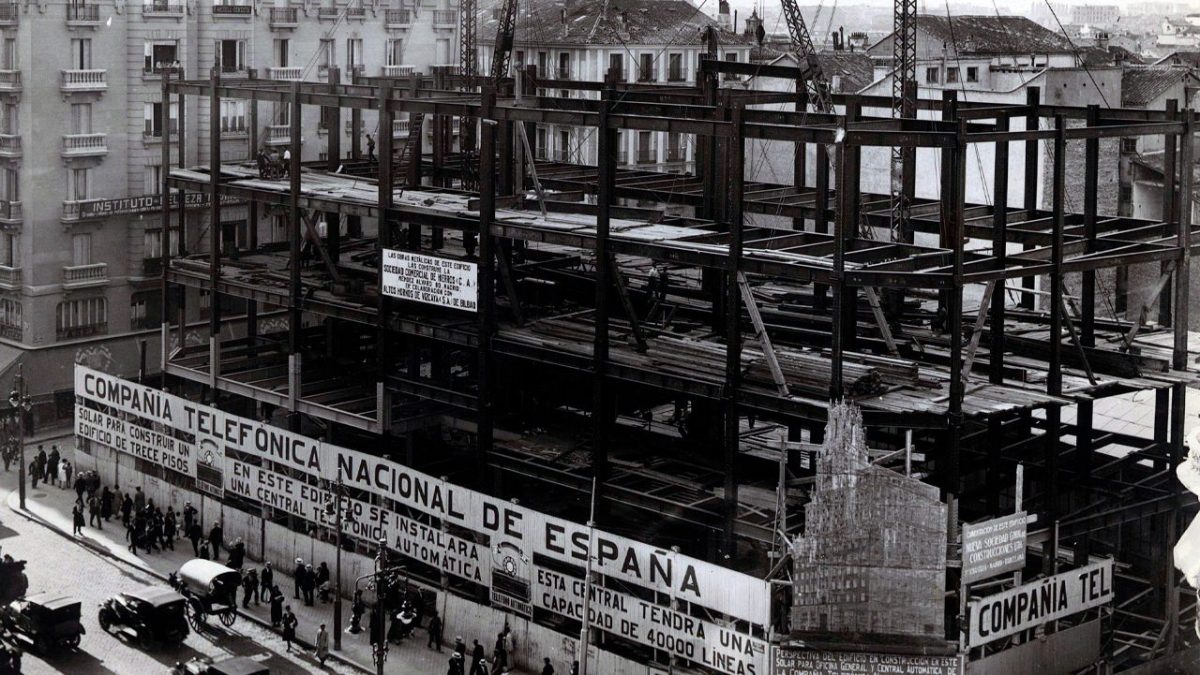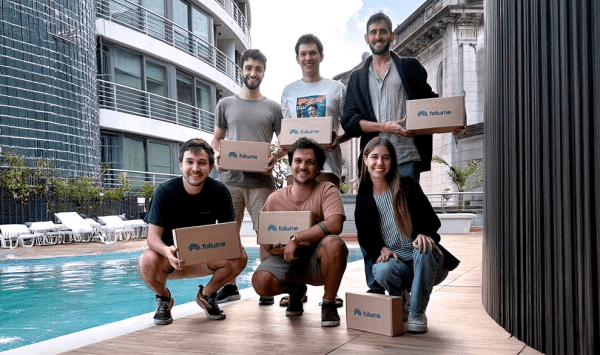Madrid’s Gran Vía street shares with one of its most emblematic buildings, the Telefónica building, a century-long history.
An evolution over the decades in which both the street and the skyscraper have been exceptional witnesses to how Spanish society has changed, enjoying (or suffering) the novelties that the passing of time has brought.
A point of reference for all travellers visiting Madrid, and with countless restaurants, bars, emblematic shops, musicals and theatres, this main thoroughfare in the Spanish capital is home to numerous secrets and curiosities.
Let’s take a look at some of them.
History of Madrid’s Gran Vía
Just over a kilometre long (1.3km to be precise), Madrid’s Gran Vía connects Plaza España with Calle Alcalá. It is a centuries-old artery whose construction progressed in phases over many years and was even considered to be three different streets depending on the sections that were inaugurated. This is part of the history of Madrid’s Gran Vía.
Origin of the Gran Vía
The rapid and constant demographic growth of the city of Madrid meant that by the end of the 19th century projects were already being considered that were going to substantially modify the urban structure.
However, it was not until the beginning of the 20th century that the specific case of the Gran Vía materialised. We could go into much more detail on the subject, but the legal basis for its construction is to be found in the Law of Internal Reform of 1895, by means of which cities with more than 30,000 inhabitants could reform and improve their urban centres.
The Madrid City Council approved the project in 1901 and the Ministry of the Interior did the same in 1904, although the works were still delayed for a few years. In 1905, approval was given for the possibility of expropriating and demolishing houses; some 300 houses were to be demolished and some fifteen streets disappeared to make room for the ambitious project that was to change the urban landscape of the Spanish capital forever.
1910-1931, construction of the Gran Vía
Although today we think of it as a single street, it was born in three distinct sections: from Calle Alcalá to Red de San Luis (opposite where the Telefónica building is located), from Red de San Luis to Callao and from Callao to what would become today’s Plaza España.
The inauguration of the first section (Alcalá to the Red de San Luis) took place on 4 April 1910, the second section (Red de San Luis-Callao) began in February 1917 and the third section began in February 1925, in two phases so as not to disrupt the growing traffic: from Callao to San Bernardo and from San Bernardo to the end.
Work on this third section was completed in 1931, so its construction as such took 21 years.
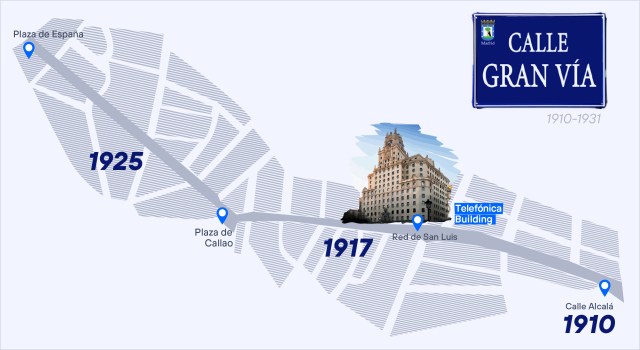
Different names for Gran Vía
This iconic street in the centre of Madrid has had different names throughout its century of life, both official and unofficial.
As it is divided into three sections, as mentioned above, it also originally had three different names: the first was Calle del Conde de Peñalver (who died in 1916, so he did not get to enjoy the fully completed section), the second was Avenida de Pi y Margall (one of the presidents of the First Republic) and the third was Calle Eduardo Dato (the president of the government who was assassinated in 1921).
Not being oblivious to the historical development of the country as a whole, shortly before the outbreak of the Civil War, in 1936, it became known as Avenida de la CNT, after the anarchist trade union centre, the largest workers’ collective of the time.
From the USSR to Primo de Rivera, the Civil War marks the nomenclature of Gran Vía
Once the war had begun, it became Avenida de Rusia, a name that would later become Avenida de la Unión Soviética. Also in 1937, the Eduardo Dato section became known as Avenida de México.
At that time, and unofficially, the citizens of Madrid also knew it as Avenida de los Obuses and Avenida del quince y medio, because of the projectiles that Franco’s army threw at the upper floors of the Telefónica building.
When the war ended, and with the victory of Franco’s side, the street took the name of the founder of the Spanish Falange, José Antonio Primo de Rivera.
It was not until years after the re-establishment of democracy, specifically in 1981, that the Gran Vía was officially given the name it still bears today, decades later.
History of the Telefónica Building on Gran Vía
Built over several years in the 1920s, the Telefónica Building opened its doors in July 1929. Although it had already contributed to the history not only of the company but of the country as a whole: it hosted the first telephone call between Spain and America, on 13 October 1928, with King Alfonso XIII and the then President of the United States, Calvin Coolidge, as protagonists.
At 90 metres high, it was the tallest building in Europe when it was inaugurated and, for more than two decades, it was also the tallest building in Madrid. Designed by Ignacio de Cárdenas, it introduced a revolutionary change: for the first time a building in Spain had a metal structure and a pioneering internal structure of wrought iron was used.
Gran Vía 28, an exceptional witness to history
The 1930s brought novelties for this architectural icon. For example, in 1930 there was a milestone that could be considered the germ of telemedicine: two hundred professionals in the field gathered in it connected with an earpiece to follow the communication via radio with a doctor in Buenos Aires, who had an amplifier attached to the stethoscope while exploring the chest of different patients, enabling a diagnosis (accurate, by the way) to be made from Madrid.
But if anything marked the 1930s, it was undoubtedly the Spanish Civil War, a conflict that we have already seen affected the very nomenclature of the street. During the conflict, which had the curiosity that each side was on a different timetable, the ‘giant’ was able to survive despite the fact that its height and location made it the target of Franco’s bombing raids.
A location and height that was also used by journalistic and literary figures such as Ernest Hemingway, Antoine de Saint-Exupèry and John Dos Passos to send their war chronicles from the building, which also housed more than 2,000 people in its basements to protect themselves from the aforementioned bombardments.
Fire in Gran Vía and move to the Telefónica District
The existence of the Telefónica building has been uneventful except for a small scare in the summer of 1970, when a fire destroyed a large part of the archives housed in its basement and forced the eviction of some twenty operators, although the incident did not escalate due to the rapid intervention of the fire brigade.
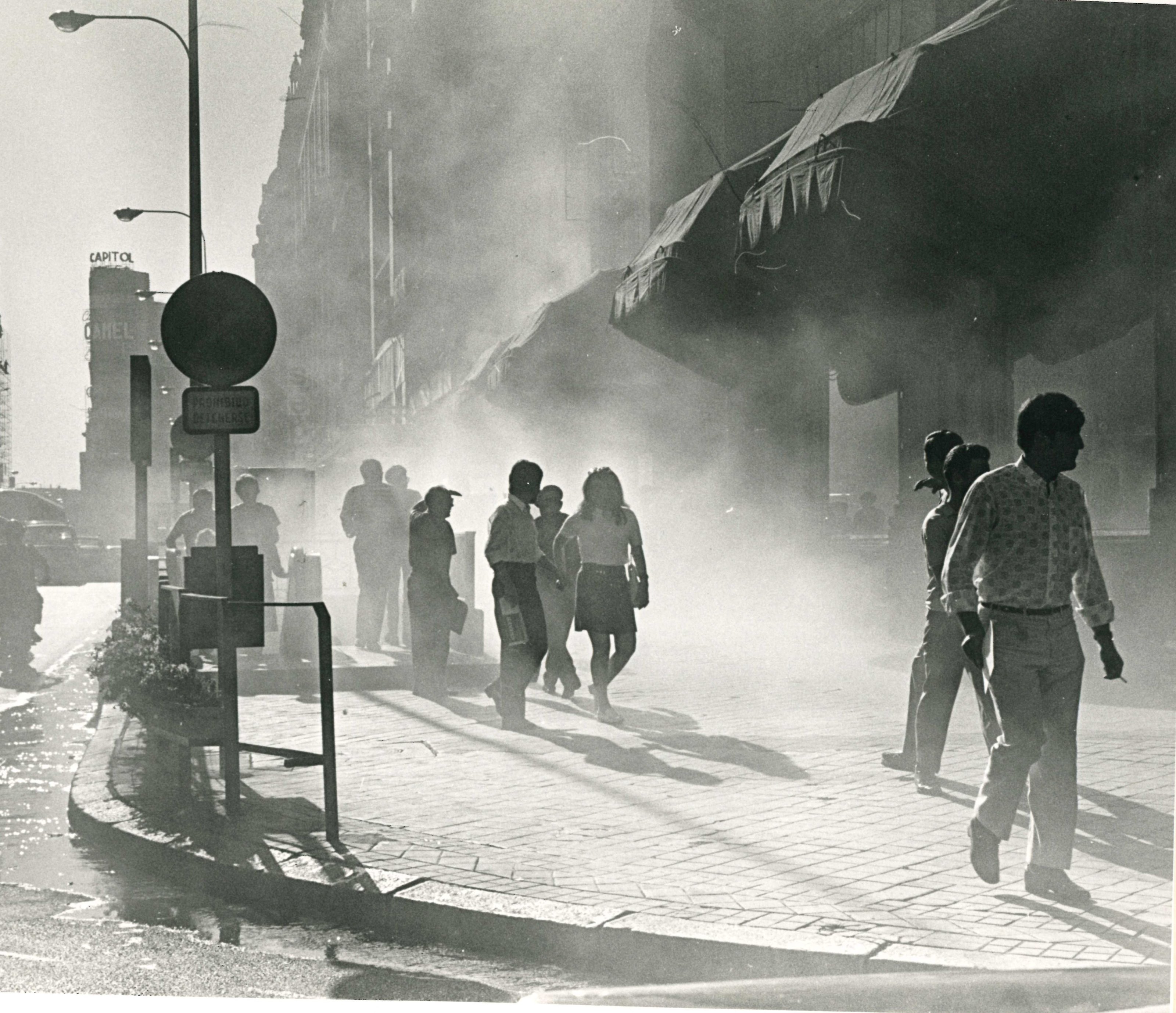
Decades later, in 2008 to be precise, the company moved its headquarters to Distrito Telefónica, so the Gran Vía building changed its functions and became home to an emblematic shop with more than 3,000 m2, whose inauguration coincided with the commercialisation of the iPhone in Spain, causing long queues that reached as far as Plaza de España.
Today, the Telefónica building on Gran Vía 28 houses two different spaces: the Espacio Fundación Telefónica and the Espacio Movistar.
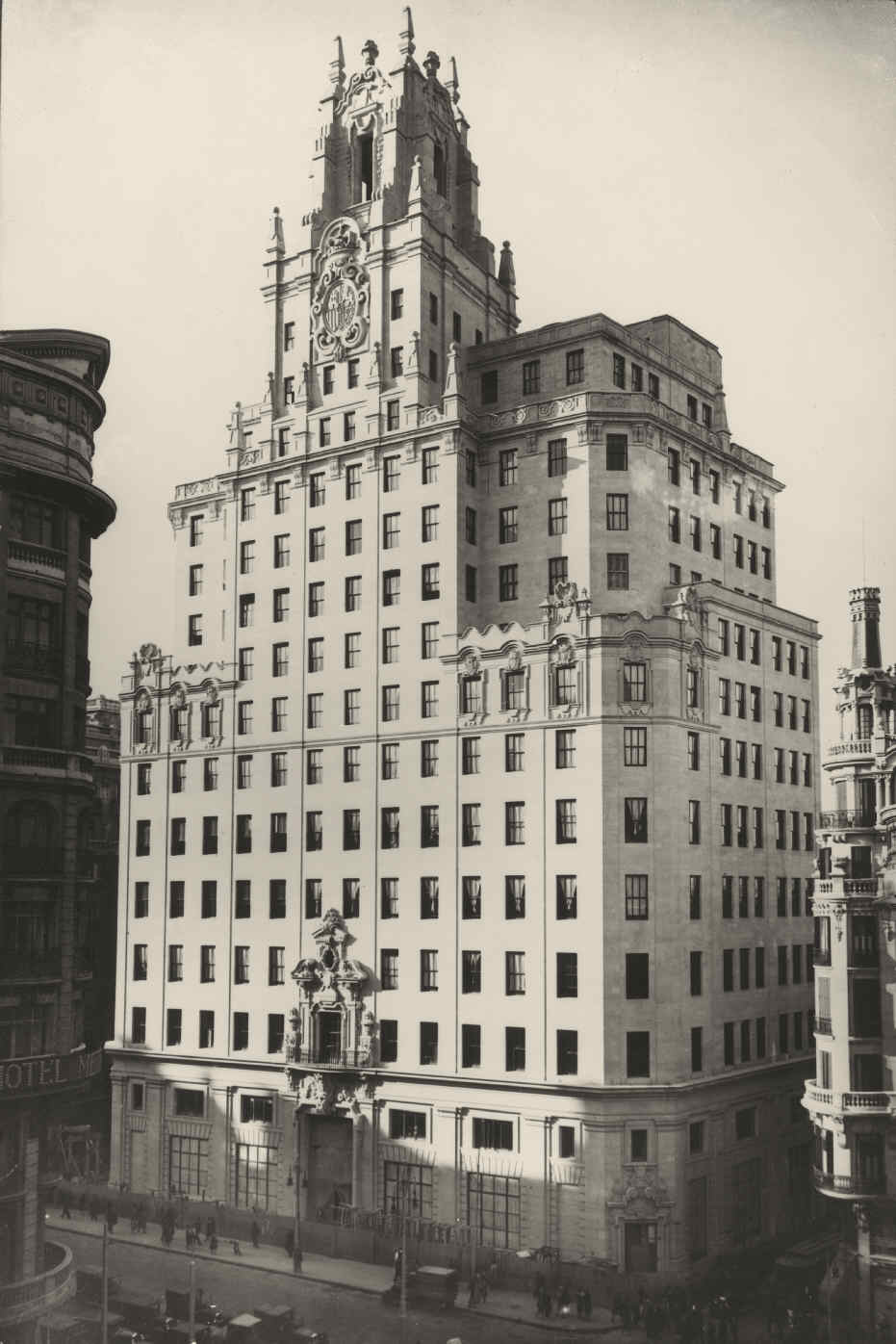
Let’s take a look at what each of them consists of.
Espacio Fundación Telefónica
Inaugurated in 2012, the Espacio Fundación Telefónica was born with the vocation of ‘becoming a place for debate, reflection, communication and meeting in a unique and emblematic location, which gives continuity to the encounter between the historical avant-garde and the revolution of knowledge that we live in today’.
Something it has undoubtedly achieved. Located in the heart of Madrid, it is marked by an intense cultural activity, as well as by the presence of unique exhibitions in a setting that, with more than 6,000 square metres, recovered the open-plan floors that existed in the building’s original project.
With a mixture of the original industrial style and modern elements, the Espacio Fundación Telefónica has become a meeting point and a point of reference for art, film, literature and, of course, technology.
Espacio Movistar
The very recently created Espacio Movistar has been created to coincide with Telefónica’s centenary in 2024. Connected to the Espacio Fundación Telefónica, technology, entertainment and the legacy of the company’s century of life coexist in a 2,800 square metre space.
An icon and a meeting point not only for Telefónica but also for the city of Madrid, as the company’s chairman, José María Álvarez-Pallete, acknowledged at the inauguration. A place that was created ‘with the vocation of being the “kilometre zero” of technology, innovation and entertainment’.
